One of the benefits of our nomadic lifestyle that we get to return to some of our favourite places and witness the changes over the years. Everywhere is on the way to somewhere, so we can often fit in these return visits to places we love. Cambodia is a country we have visited many times over the last 20 odd years, sometimes on the way to Australia, sometimes on a trip around Indochina. Cambodia has changed a lot in that time and nowhere is that change more evident than at the magnificent Angkor Temple complex, arguably the most famous UNESCO World Heritage Site in the world.
Around one thousand temples and ruins are spread across the greater Angkor area. These range in scale from piles of brick scattered through the rice paddies to the magnificent Angkor Wat itself. Said to be the world’s largest religious monument, it is certainly one of the most impressive sights on the planet.

Images of Angkor Wat appear on the national flag and the Cambodian currency. It is a huge source of pride to this very poor country.
How things have changed..
Don’t you just hate it when people say “you should have visited years ago”?
Nevertheless this is very much the case with Angkor. On our first visit in 2000 we were able to wander the temples relatively free from crowds. On that first visit I can we left our hotel in the very early hours to take the iconic shot of dawn breaking over Angkor Wat. When we arrived there were maybe five or six others already there waiting for the sun to rise. It was very pleasant, very quiet and very relaxed and easy to get a half decent shot.
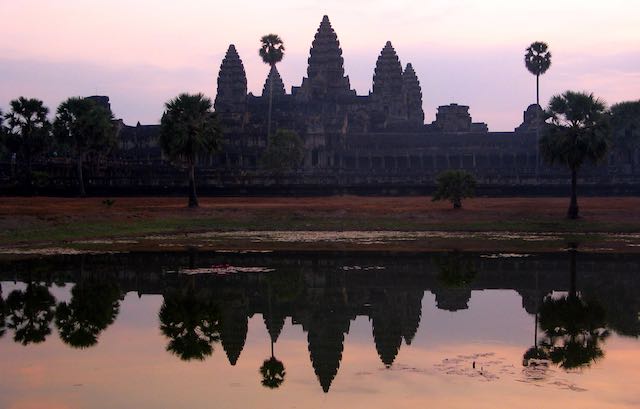


Fast forward to our second visit in 2008, when we arrived at dawn at virtually the same spot, there were not a handful of photographers but likely closer to to 2000 people, all jostling for position to take the perfect snap. We cut our losses and headed off to explore some of the smaller, less visited temples while it was still quiet. On our last visit in 2015, we just didn’t bother with the dawn run as everywhere else seemed incredibly crowded even in the noon time heat when the sites were usually quiet.
In no particular order, small selection of the huge number of photos of our visits here.

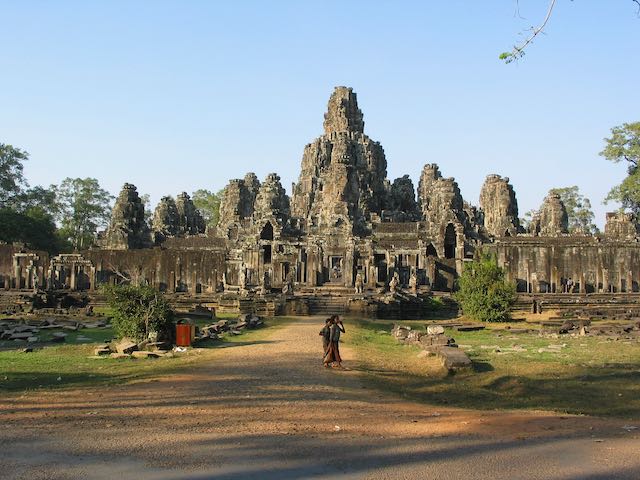


It has been a while so sadly I cannot remember which is which but some of the places we visited included:
- Angko Wat
- Angkor West Gate,
- Angkor ThomThom
- Chau Say Thevoda,
- Prasat Tob,
- Prasat Kraven
- Bayon Temple

Feel free to comment if you are able to identify any of the shots!


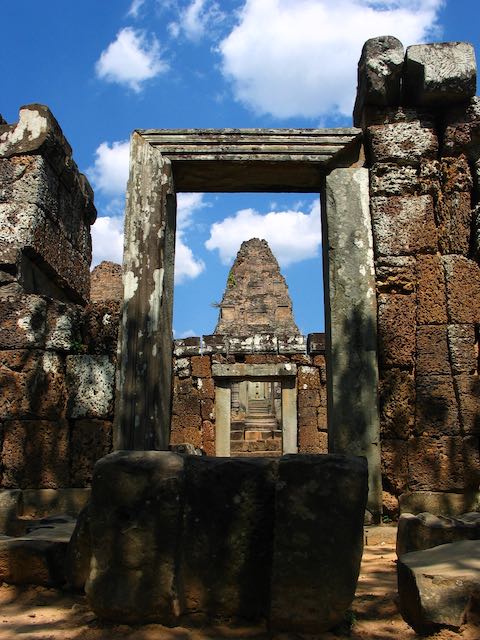

Angkor has changed – a lot!
How best to explore?
On each of our three visits we tried a different approach. There is no right or wrong way. I think it is down to personal preference and comfort as to which is best.
How much time to spend there, is also subject to a lot of debate on travel forums. If you have a great interest in temples, you could easily spend a couple of weeks here and not see everything. If short on time you could cover a fair amount in a couple of very hectic days. Personally, I think 3-5 days is about right
Option 1 – Hire a Driver and Guide
On our first visit we arranged an English speaking official guide plus a car and driver in advance. Back then it was around $25 per day for the guide and the same again for the car and driver. Probably a little more expensive now.
Advantages
- An air-conditioned car is a huge a respite from the heat
- A fully qualified, knowledgeable guide who know all there is to know about Angkor
- Cool drinks are always on hand
- The car is generally available for the whole day so it can be used to visit other places as well
Drawbacks
- Official guides tend operate on official scripts which can be very lengthy! Fine if you want to know all there is to know and need the detail, if, like me, you have a short attention span and don’t really need the Nth degree of detail, it can get a little tedious over three or four days. We sometimes found it difficult to stop the guide once in full flow
Possibly a good option for a first or only visit to Angkor
Option 2 – Tuk Tuk and driver only
On our second visit we hired a Tuk Tuk and driver from the guest-house where we were staying. The cost was $30 per day.
Advantages
- No air-conditioning, but a nice breeze when on the move. Good to experience the sights, sounds and smells when moving from sight to sight
- Our guy didn’t speak any English and I can only manage a few words of Khmer so no lengthy discourses on the history of each site
- The driver is generally available for the whole day.
- Good if you want to do your own research on the temples beforehand- Dawn Rooney’s – Angkor: Cambodia’s Wondrous Khmer Temples apparently is one of the definitive guides on the subject.
- The cheapest option
Disadvantages
- Not great if you do want all the details and history On hand
- the lack of air-conditioning could be an issue for those who find the heat difficult
Tuk Tuk plus Guide
On our third visit we took Carolyn’s parents and we decided on a compromise. We felt that the combination of a tuk tuk and a guide gave us the best of both worlds.

Advantages
- The Tuk Tuk was an authentic Cambodian experience for my in-laws. They enjoyed the fresh air traveling from temple to temple and didn’t miss the air-conditioning
- As there were four of us I didn’t feel bad about wandering off To take photos whilst the guide was waxing lyrical about the detail of each site.
There were no real disadvantages to this method unless air-conditioning is important to you.
NOTE – Generally speaking if you are hiring a tuk tuk or car, you rent it for the day so it is available for other trips for the whole day. Some people want to return to their hotels to avoid the midday heat and just visit the temples in the early morning and late afternoon. if going to outlying temple or perhaps Tonle Sap lake, it is appropriate to negotiate the additional cost
Ethical issues
Tuk Tuk drivers in Cambodia lead a hard and precarious existence. Most do not own their vehicles but rent them from wealthier Cambodians (often described as the Tuk Tuk mafia!).
We spent some time with one such driver who explained the economics to me. He was paying $15 per day to rent his vehicle. Many tourists were negotiating prices down as far as they could. In some cases he would barely cover the cost of rent and fuel leaving little or nothing to feed his family. Paying bribes to police officers was also another regular outgoing. (no getting away from corruption in Cambodia). Do think twice about the wider implications of getting a travel bargain. Saving a few dollars will mean little to a tourist but could be the difference between his family eating or not eating. Generally speaking the concept of tipping is anathema to me – but tuk-tuks in Cambodia are an exception.
The exponential increase in visitor numbers is clearly taking its toll and it is no longer possible to enjoy a pleasant stroll amongst the ruins free from the crowds, at least in the peak season from November to March. Maybe the answer is to visit in the rainy season. It may be wet and humid but the crowds will be much reduced and everywhere will be lush and green rather than the usual dry and brown.
Tonle Sap
Not far from Siem Reap is the seasonally inundated Tonle Sap Lake. The lake increases and reduces massively with the coming and going of the monsoons. Although a combination of climate change and the Chinese building their enormous dams is putting this amazingly diverse eco system in severe jeopardy. on our last trip we had planned to take the boat from Battambang to Siem Reap, sadly the low levels of the river and lake made this impossible.

The flow on the Tonle Sap river which feed the lake is used to be reversed for 5-6 months each year. This is now reduced to 5-6 weeks severely endangering one of the greatest fresh water fisheries on the planet , to say nothing of the livelihoods and food sources of millions of people.
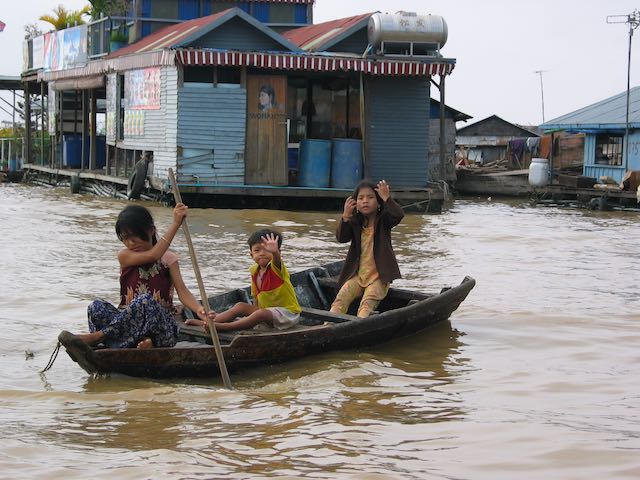

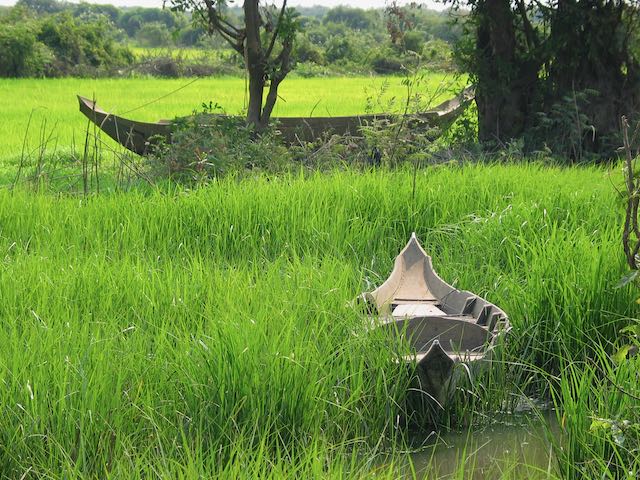
To get anywhere on the Tonle Sap which is unaffected by tourism means travelling further and further afield. These days probably 50-60 km from Siem Reap.
We were lucky to stumble across this floating school on the day it was being moved to a new location because of the rising lake levels – seemed like the kids were having a lot of fun!

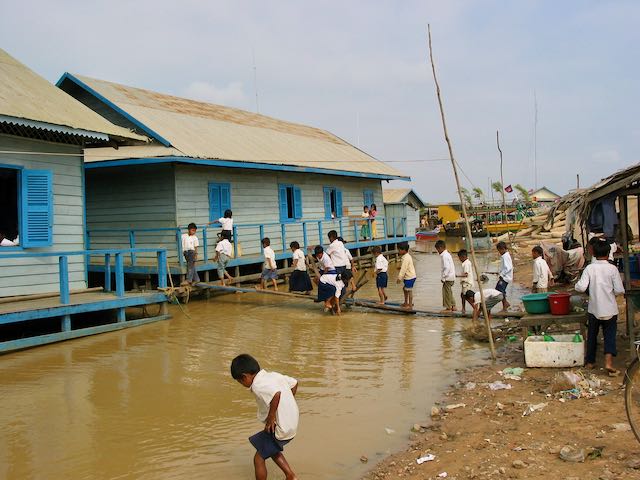

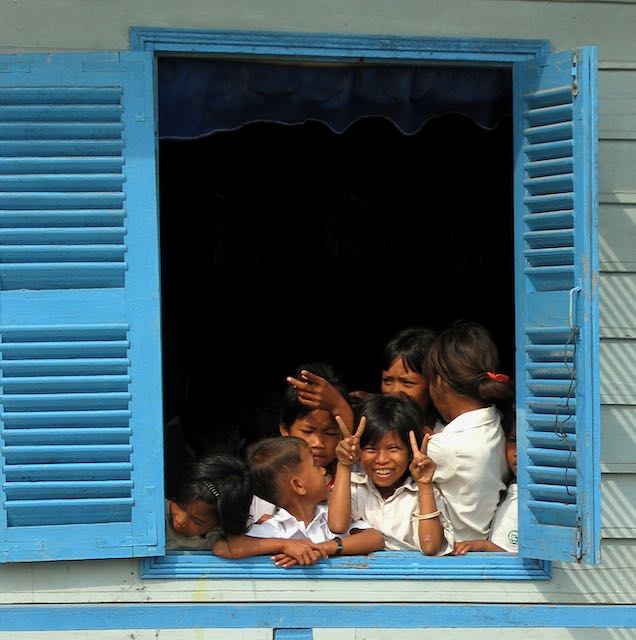
Apart from the obvious attractions of Angkor, it is definitely worth getting out and about into the Cambodian countryside.

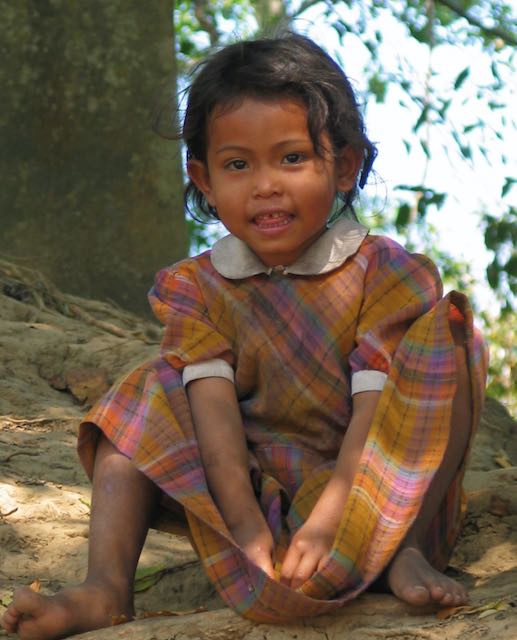


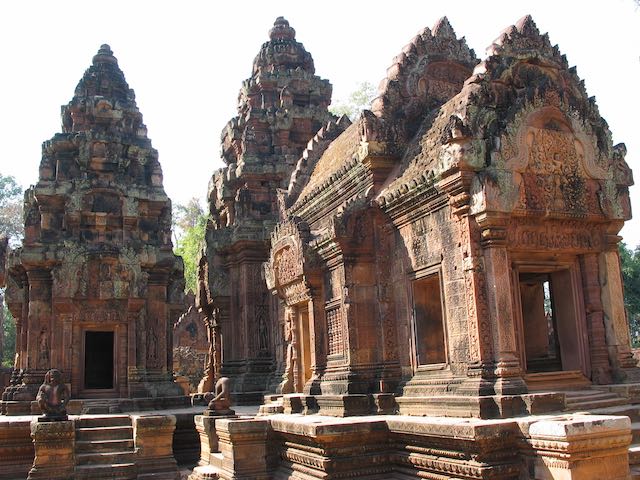
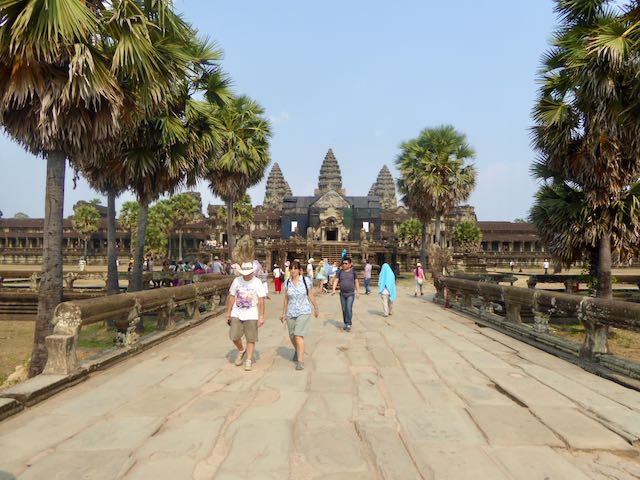

Great post Clive. Missing Siem Reap a lot. Such great food and people. We found that there was a horse sanctuary close by the centre and went to meet the horses. The owners were so welcoming and we ended up making lots of horse friends. Also an amazing pop up art gallery where you can put yourselves into the pictures and take pictures of yourself being eaten by sharks or becoming the emperor of egypt. And did I meantion the food? Haha.
Thanks again and hope you are both well.
Thanks Nic. We really loved our time in Cambodia, the food, the people etc.. missed the horses and the pop up gallery – maybe next time
Thanks for the look back at Cambodia. Angkor Wat was always one of the places I longed to visit. I went in 2010 or 2011 and was so disappointed. We went at lunchtime when I guess many people go back to a cool spot so it wasn’t horribly crowded, but just didn’t live up to my expectations. I did enjoy several of the other temples though with Banteay Srei being a favorite. For a driver/guide car/tuktuk we had a hybrid I guess. Got a recommended driver who was also very knowledgeable so while not licensed as a guide was very helpful with his info. We did a car and a tuktuk. It worked out well.
Love your dawn photos. I’m so glad I was able to visit before the crowds. I went in 2001 with a small Intrepid tour group: two and a half days with a guide. That wasn’t long enough for me, so I went back on my own in 2004 for several days. I used a tuk-tuk and the Dawn Rooney book.
Sorry, but not surprised, to read about the state of Tonle Sap. It’s such a wonderful, unique, ecosystem. In 2001 we went by boat from Siem Reap to Battambang. I couldn’t figure out how the boatman was navigating as all the channels looked the same. Did you take the Bamboo Express in Battambang?
We did take the Bamboo Express. I covered it in my Battamabang post. Sadly, I think it was closed last year to make way for the new train service to Phnom Penh – but I could be wrong!!!